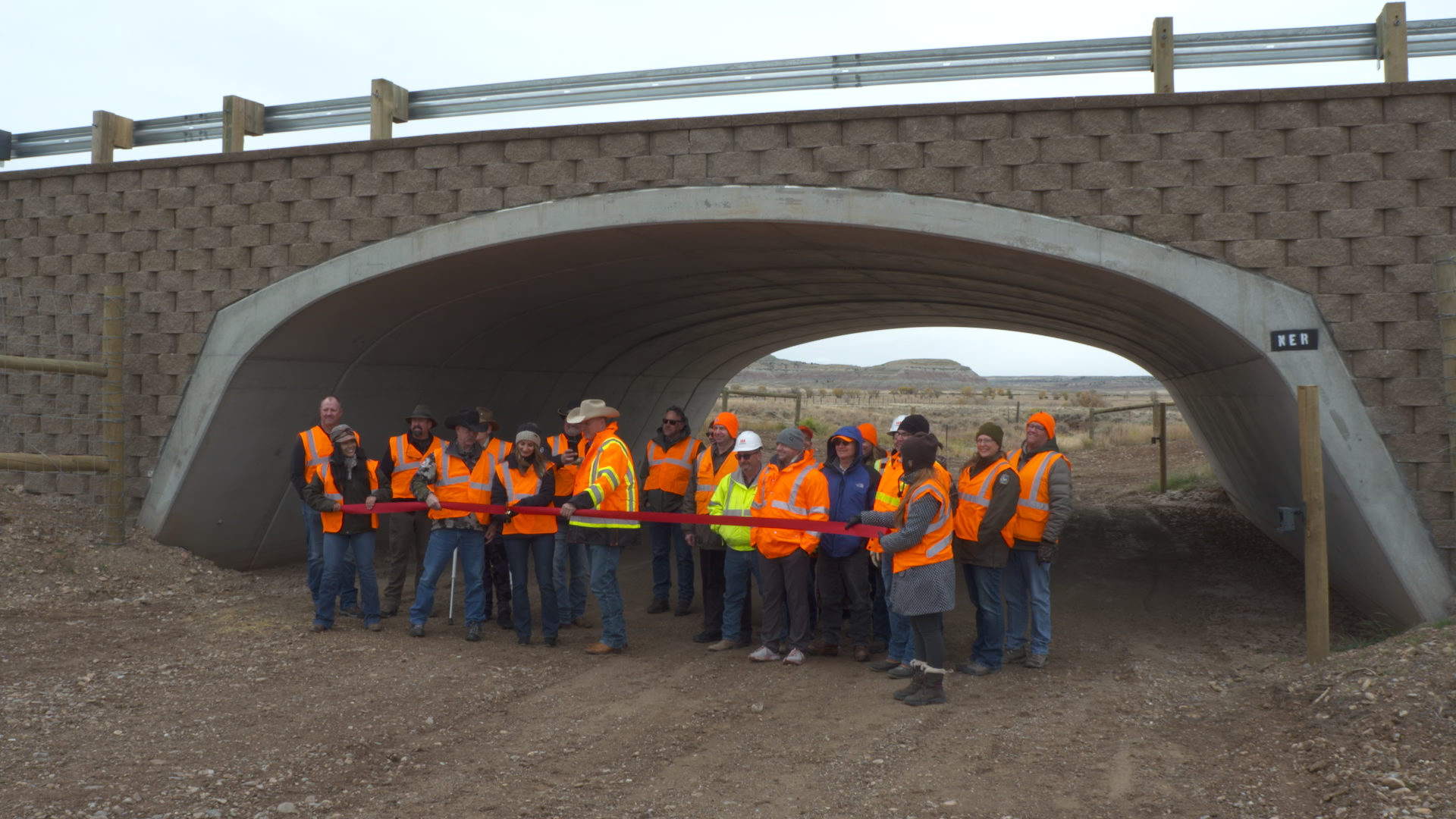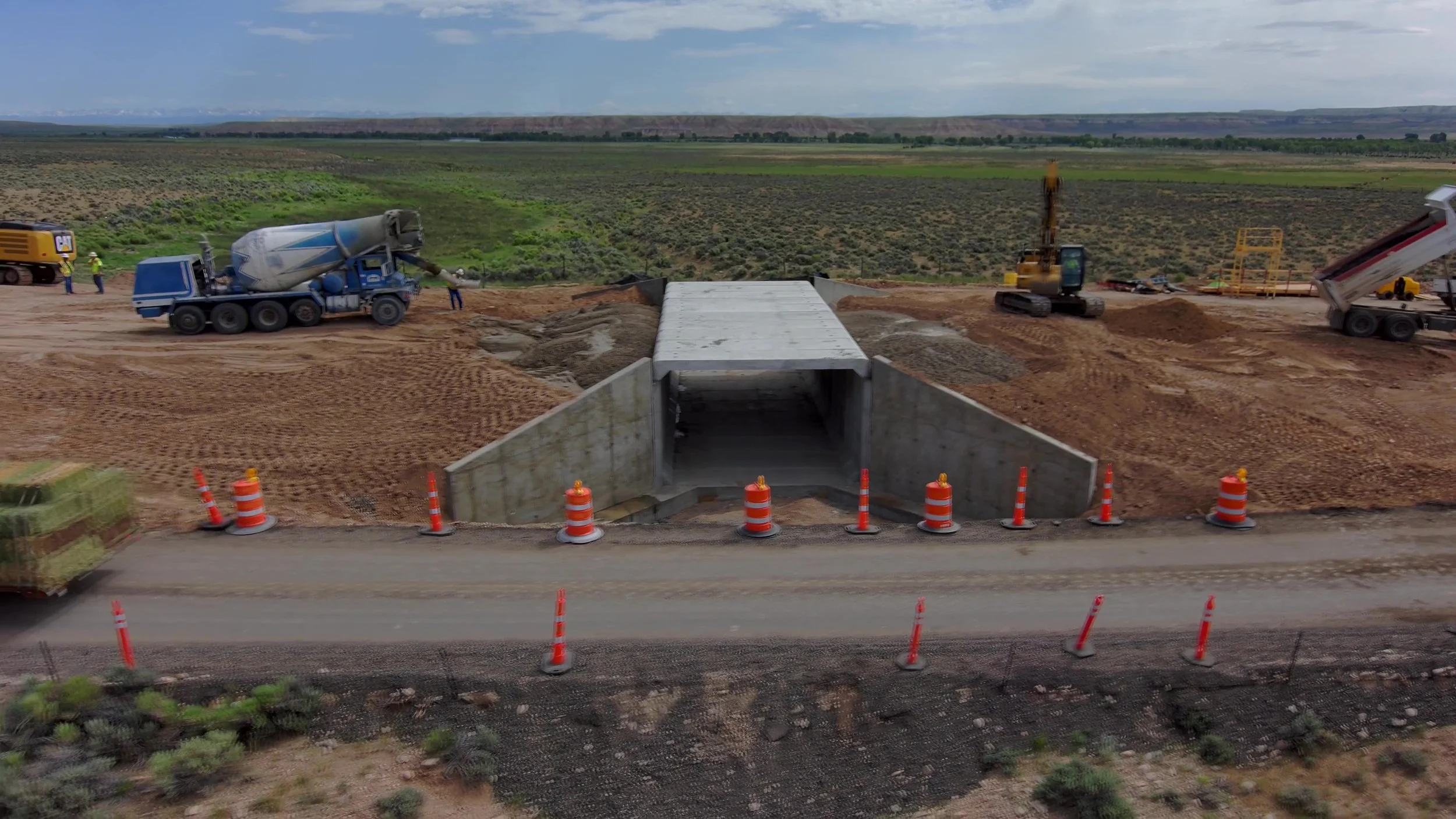Wyoming’s Dry Piney Wildlife Connectivity Project complete with nine underpasses
On October 12, 2023, the Wyoming Department of Transportation (WYDOT) hosted a ribbon-cutting ceremony to celebrate the completion of the Dry Piney Connectivity Project – a wildlife crossing project that will help address the issues of wildlife permeability and human safety along a 19-mile stretch of U.S. Highway 189. A collaborative effort between state agencies, conservation organizations, private foundations, and individuals resulted in the successful fundraising for and construction of the project.
Dry Piney Connectivity Project partners gathered for the ribbon-cutting ceremony at one of the newly constructed underpasses along U.S. Highway 189. (Photo WYDOT)
The section of U.S. Highway 189 between the communities of Big Piney and La Barge, Wyoming, has historically represented a hotspot for wildlife-vehicle collisions. Driving this two-lane highway, it was not uncommon to see deer carcasses littering the sides of the road. Situated within the migratory path of the iconic Wyoming Range mule deer herd, U.S. 189 presented one of the largest barriers between alpine summer habitat of the Wyoming Range and the sagebrush steppe ecosystem where thousands of deer spend the winter. In addition to mule deer, this section of road is also crossed by elk, pronghorn antelope, and moose who need to travel across this roadway during seasonal migrations.
Already, wildlife have been reported using the nine underpasses, preventing collisions along a stretch of highway that previously saw some of the highest rates of wildlife collisions in the state of Wyoming.
Mule deer captured on trail cameras using the underpasses constructed as part of the Dry Piney Connectivity Project. (Photo WYDOT)
Breaking ground in May of 2022, the Dry Piney Connectivity Project was completed earlier this month. The project consists of nine underpasses, 33 miles of fencing, and two miles of new road to ensure safe passage of wildlife along the 19-mile stretch of roadway. A ribbon-cutting ceremony was held at the location of one of the underpasses to celebrate the completion of the project. Representatives from the Wyoming Department of Transportation and the Wyoming Wildlife and Natural Resources Trust (WWNRT) spoke to the importance of crossing structures in Wyoming and the effectiveness of joint fundraising to secure resources for this project.
GYC assisted in raising the $17 million in funds needed for the project. This included helping WYDOT secure a $14.5 million BUILD grant with the Federal Highway Administration and securing an additional $400,000 in grant funding through the Knobloch Family Foundation, The Volgenau Foundation, and National Fish and Wildlife Foundation. WWNRT created a match funding opportunity with the nonprofit partners, contributing $349,000. Both WYDOT and the Wyoming Game and Fish Commission donated $1.25 million to the project.
One of the Dry Piney underpasses during the construction process. (Photo WYDOT)
The Dry Piney Connectivity Project is a testament to the value Wyoming has placed on protecting ungulate migrations. Wyoming is a national leader in wildlife crossings, in large part due to the state’s successful collaborative approach to fundraising and project implementation. Numerous stakeholders came together to find a solution that benefits both wildlife permeability and human safety. Dry Piney serves as a prime example for the state of Wyoming and communities across the Greater Yellowstone Ecosystem on addressing safe passage for the iconic species like mule deer, elk, and pronghorn that call this landscape home. GYC is proud to work with our partners and be a part of projects like this across the ecosystem.
—Teddy Collins, Western Wyoming Conservation Associate




